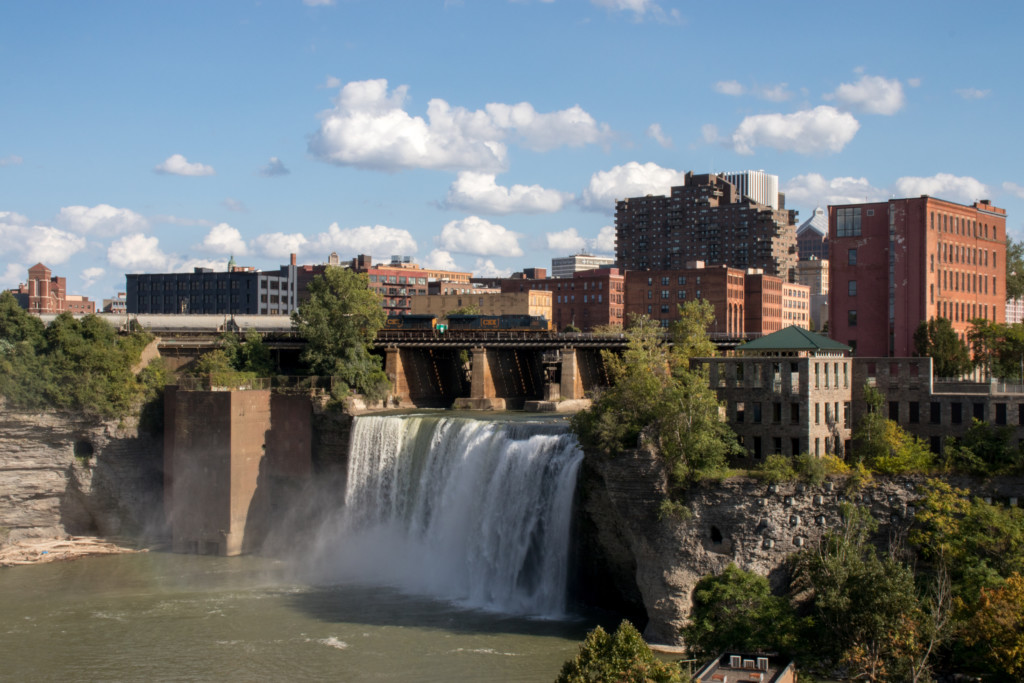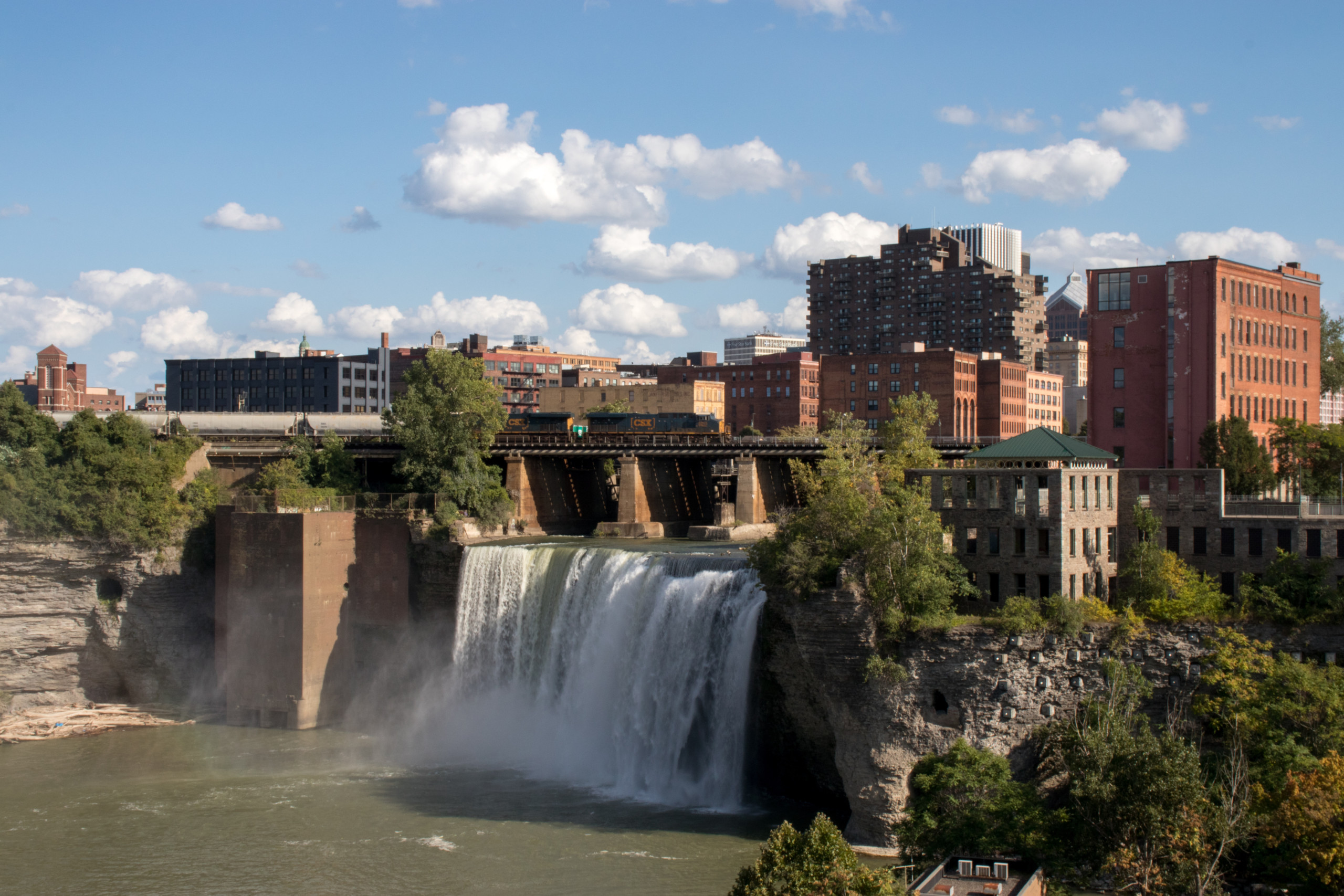Rochester owes much of its early growth to numerous flour mills, often referred to as grist mills. In fact, the first American settlement in the area which we now call Rochester was a grist mill on the Genesee River, west of what was previously known as Upper Falls. At one point in the 19th century, thanks to the creation of the Erie Canal, Rochester became the largest manufacturer of baking flour in the world, leading to it being named the “Flour City.”
The construction of the first grist mill began in 1789, with Ebenezer “Indian” Allan, a well-known frontiersman. He intended to sell the flour to white settlers and the native Seneca tribe. Unfortunately for him, his mill was unsuccessful due to a lack of customers, and Allan abandoned it. The mill and its land were subsequently passed around to different buyers until 1803, when it was purchased by Charles Carroll, William Fitzhugh, and Nathaniel Rochester. It wasn’t until after the establishment of a port of entry between the Genesee River and Lake Ontario in 1805, and the rise in trade with Montreal in the years leading up to the War of 1812, that flour became a significant export. When the war ended in 1814, the area’s population boomed, and Rochesterville officially became a village in 1817.
One of the most influential flour mills in the area was the Brown Flour Mill. It was established in 1810 by brothers Matthew and Francis Bacon, also on the west side of Upper Falls. They founded the Village of Frankfort in 1815, which later became annexed by Rochesterville. Following the establishment of the Brown Flour Mill, 21 flour mills were created in the next 25 years. According to a former historian, “by 1835, ‘Rochester’s [flour] output surged past that of Baltimore and made it for a decade or so the leading flour city of the entire world.’” The Visit Rochester website even claims that Queen Victoria of England was once a customer. Farmers started to shift from their main crop of corn for distilleries to acres of wheat to provide the necessary raw ingredients for flour, with requirements for operations amounting to as much as 15,000 bushels per day.
What spurred the growth of all these flour mills? The Erie Canal was completed in 1825 and connected the flour mills in the Upper Falls area with the Hudson River and the ports of New York City. The canal had a longer shipping season and was much safer than traveling on Lake Ontario, which cut travel time to the Atlantic Ocean in half and dropped shipping rates by 94%.
Unfortunately for the growing city, this flour boom couldn’t last forever. There were several years in the 1850s with poor wheat crop growth due to drought and insects. As time passed, the frontier moved further west into the Great Plains. Minneapolis became the new “Flour City,” despite the fact that Rochester was producing more barrels of flour than ever before, with over one and a half million barrels of flour (over double what it had produced fifty ears earlier) being shipped from Rochester in 1901 alone.
So, with the loss of the “Flour City” title, how did Rochester acquire the title of the “Flower City”? In the 1850s, local horticulturists George Ellwanger and Patrick Barry’s nursery business started to gain international attention. Ellwanger had begun the business in 1839, and by 1860 it controlled over 500 acres in the Rochester area. Their first site was the Mount Hope Nursery which became the world’s largest nursery in 1888 and closed in 1918. The 20acres of land Ellwanger and Barry donated to the City of Rochester, which became Highland Park. The first Lilac Festival was held there in 1898, attracting over 3,000 visitors in May, and had 25,000 visitors by the 1908 festival. Their success is most likely the reason Rochester became known as the Flower City, which is how we know it today.



